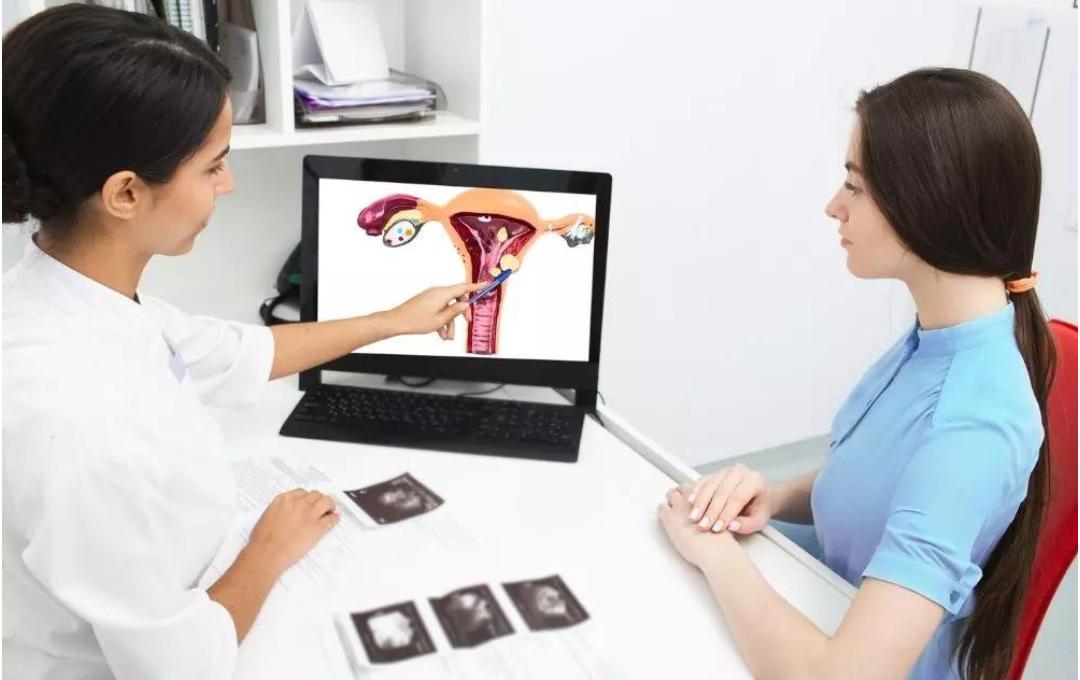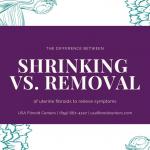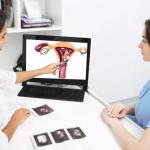
Embarking on the journey of addressing uterine fibroids through uterine fibroid embolization (UFE) represents a pivotal moment in reclaiming control over your health and quality of life. This comprehensive guide is tailored to equip you with the necessary insights to navigate each phase of the UFE procedure, from initial considerations to post-procedural care. Whether you’re just beginning to explore treatment options or are actively preparing for UFE, this guide aims to alleviate uncertainties and empower you to make informed decisions.
Before embarking on the Uterine Fibroid Embolization process, it’s crucial to familiarize yourself with information about fibroids and the diverse array of symptoms associated with this condition. Common symptoms of fibroids encompass a spectrum of experiences, including but not limited to heavy menstrual flow, discomfort or pain during sexual intercourse, and irregular menstrual periods.
What is UFE?
The uterine fibroid embolization process is a minimally invasive, non-surgical procedure that shrinks your fibroids by cutting off the blood supply that helps them grow. UFE is recognized as safe and effective by the American College of Obstetrics and Gynecology (ACOG). UFE has been successfully used by doctors worldwide to treat fibroids for over two decades.
Understanding Your Symptoms and Considering UFE
Addressing uterine fibroids through uterine fibroid embolization (UFE) often becomes a consideration for individuals experiencing a range of symptoms attributed to fibroids. These symptoms can significantly impact one’s quality of life, leading them to explore treatment options like UFE. Common symptoms associated with fibroids include heavy menstrual bleeding, pelvic pain or pressure, frequent urination, and discomfort during sexual intercourse. If you find yourself grappling with any of these symptoms, it’s essential to consult with a healthcare provider specializing in fibroid management.
Assessing Treatment Options
Upon recognizing the symptoms and their impact on daily life, individuals may begin researching various treatment options for fibroids. Uterine fibroid embolization (UFE) emerges as a minimally invasive, non-surgical procedure offering significant relief from fibroid symptoms. Unlike traditional surgical interventions like hysterectomy, which involve removing the uterus entirely, UFE targets the fibroids directly by cutting off their blood supply. This approach effectively shrinks the fibroids, thereby alleviating symptoms while preserving the uterus. For many, the prospect of a less invasive treatment option like UFE is appealing, prompting further exploration and consideration.
For up to 95% of patients, UFE is effective at alleviating fibroid-related symptoms [National Institute of Health]
Exploring UFE as a Treatment Option
As individuals delve deeper into their research on fibroid treatments, they often encounter information about uterine fibroid embolization (UFE) and its benefits. UFE has gained recognition as a safe and effective procedure endorsed by leading medical organizations such as the American College of Obstetricians and Gynecologists (ACOG). This procedure has been successfully utilized by healthcare providers worldwide for over two decades, offering individuals a viable alternative to surgery. With its minimal recovery time and lower risk profile compared to traditional surgical interventions, UFE emerges as an attractive option for many seeking relief from fibroid symptoms.
Scheduling Your Appointment
One of the first steps in starting with UFE is to schedule a consultation with a fibroid expert. With USA Fibroid Centers, we offer options to schedule your appointment online, or you can call 855.615.2555.
The Consultation
When preparing for your initial consultation, prepare any questions and get together everything you need for the appointment. On the day of your consultation, bring your insurance, a photo ID, a list of your current medications, and other relevant medical information.
Some patients might require an ultrasound or MRI at the consultation. During your consultation, our fibroid specialists will review your medical imaging, which may include ultrasound or MRI scans, to determine the size, location, and number of fibroids. Following this review, a physical examination will be conducted, and your specialist will inquire about your symptoms and medical history. Finally, your fibroid specialist will discuss your treatment goals to make recommendations and develop a personalized care plan.
UFE Preparation
Before your procedure, you can do a few things to ensure a smooth process and make your recovery even more manageable, including:
- Talk to your doctor: Inform them of all the medications you are taking and if you have any drug allergies. If you usually take morning medications, ask your doctor for specific instructions before UFE.
- Staying hydrated: Drink plenty of fluids the day before treatment, but do not eat or drink anything after midnight.
- Avoid inflammatory foods: For your comfort, don’t eat or drink anything that can cause a flare-up in your fibroids, including alcohol and red meat.
- Exercise: Exercising is excellent for managing fibroid symptoms and creating endorphins to put you in a good mood and relieve stress or anxiety about the procedure.
- Get plenty of sleep: Getting enough sleep before the procedure can help with post-procedure recovery. If you struggle with sleeping, talk to your doctor about using over-the-counter sleeping aids, especially if you are taking other medication.
Making these preparations in the days leading up to your procedure will help you physically be ready for the uterine fibroid embolization process while allowing you to be in a better space mentally and emotionally.
Although UFE is a minimally invasive procedure, it’s understandable if you feel nervous before getting it done. Researching the process to understand how it works and talking to family, friends, your doctor, or a therapist about your concerns is a good idea.
The Day of the Procedure
On the morning of your procedure, take the following measures:
- Bathe or shower before arriving.
- Avoid lotions and strong perfumes.
- Remove all jewelry, piercings, and contact lenses.
- Wear loose and comfortable clothing.
- Bring someone to drive you home.
When you arrive at the office, you will handle the usual paperwork of signing in before beginning the uterine fibroid embolization process.
UFE Procedure Explained
UFE is performed in an outpatient setting under light sedation to keep you relaxed during the procedure. After the sedative has been provided, the procedure will go as follows:
- A local anesthetic is then administered in the groin or wrist to prevent you from experiencing pain during the procedure.
- Once the anesthetic is applied and takes effect, a catheter is inserted in the vein with a needle.
- The catheter is guided by real-time imaging into the artery, feeding the fibroid.
- Tiny particles blocking the blood supply to the fibroid are introduced into the catheter.
The procedure usually takes around half an hour, although it may be longer if there are more fibroids. However, it typically does not last longer than an hour, and you can return home the same day. On average, recovery time for UFE is between one to two weeks.
UFE Post-Procedure
After your procedure, you will be taken to a recovery room for monitoring. Most likely, you will experience pain similar to strong menstrual cramps for about a day, along with a small bruise or swelling at the catheter site. If necessary, your doctor can administer pain medication.
When ready, you can return home to begin recovering. If you have questions about what to expect after treatment, contact one of our experienced fibroid specialists.
Recovering from UFE
We highly recommend planning to stay home from work for the first week to recover from the uterine fibroid embolization process. Most women recover from UFE and return to their daily activities within one to two weeks. Make sure you eat well and remain hydrated during your recovery period.
Below is a general timeline of symptoms you may experience when recovering from UFE:
- Immediately after UFE, expect cramping in your lower abdomen for the first 24 hours, similar to a regular menstrual cycle, but it should subside quickly.
- Some women experience nausea or a low-grade fever during the first couple of days after fibroid embolization. You can talk to your doctor about the best medication for your situation.
- For up to several weeks following treatment, you may experience vaginal bleeding, spotting, or discharge, which should improve over time as the treated fibroids begin to shrink.
Although you can return to your routine in about one to two weeks, the overall fibroid recovery process typically takes three to six months.
UFE Recovery Steps
Following your UFE procedure, here are a few steps you can take to aid in the recovery process:
For the first two weeks post-UFE:
- Do not take baths, but you can shower.
- Abstain from sex.
- Do not travel.
Throughout the rest of your recovery, you also should:
- Get plenty of rest
- Use pads instead of tampons during your next period.
- Avoid heavy lifting or strenuous exercise.
Contact your fibroid specialist with any concerns about your post-procedure recovery or if you experience any of the following:
- Infection
- High fever
- Chills
- Excessive bleeding
- Blood clots
- An adverse reaction to any prescribed medication.
Remember to schedule follow-up appointments after the uterine fibroid embolization process so your doctors can check that your body is healing properly.
Post-UFE Improvements
During fibroid recovery, you may notice several improvements to your physical health, including:
- When your periods return, they will likely be lighter, shorter, and more regular
- If you were anemic due to heavy periods, your blood counts should improve.
- Less pain during sex
Other improvements you may experience depend on your symptoms before UFE. For example, if you experienced constipation due to fibroids, there may be a significant difference as the pressure on your bowel decreases. UFE can also positively impact your mental health, as many women report having higher self-esteem due to the dwindling fibroid symptoms.
Get Started On Your UFE Journey Today
If you have questions not answered in our UFE Guide or are interested in scheduling an initial consultation, contact us today by calling 855.615.2555 or online.
You can find a fibroid treatment center near you using the zip code finder below.





